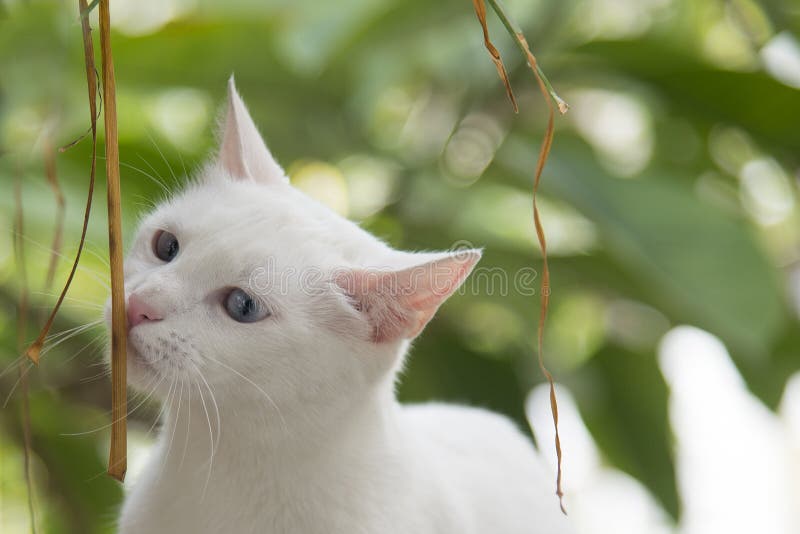The Wonder Of Animals: A Celebration Of Nature's Creativity

Table of Contents
Amazing Animal Adaptations: Nature's Ingenious Solutions
Animals have evolved a stunning array of adaptations to thrive in diverse environments. These ingenious solutions are a testament to nature's creativity and the power of natural selection.
Camouflage and Mimicry
Camouflage and mimicry are remarkable survival strategies employed by countless animals. Camouflage involves blending seamlessly with the environment to avoid detection by predators or to ambush prey. Mimicry, on the other hand, involves resembling another organism to gain protection or deceive potential threats.
-
Examples of Camouflage:
- Stick insects: Their stick-like appearance makes them virtually invisible among branches.
- Chameleons: Their color-changing abilities allow them to perfectly match their surroundings.
- Arctic foxes: Their white fur provides excellent camouflage in snowy landscapes.
- Octopuses: Some species can change color and texture to blend with their environment.
-
Examples of Mimicry:
- Viceroy butterfly: Its resemblance to the poisonous monarch butterfly deters predators.
- Hognose snake: It mimics the appearance of a venomous cobra to scare away threats.
- Flower mantis: Its appearance mimics flowers to attract unsuspecting prey.
These examples highlight the incredible diversity of animal camouflage and mimicry, showcasing the power of natural selection in shaping survival strategies. Understanding animal camouflage and animal mimicry provides insights into the evolutionary processes that have shaped the animal kingdom.
Physical Adaptations for Survival
Physical characteristics play a vital role in an animal's ability to survive and reproduce. The "wonder of animals" is often revealed through the unique physical adaptations that enable them to thrive in their specific niches.
- Examples of Physical Adaptations:
- Giraffe's long neck: Allows it to reach high into trees for food.
- Lion's sharp claws: Essential for hunting and defense.
- Dolphin's streamlined body: Optimizes movement through water.
- Eagle's sharp eyesight: Enables it to spot prey from great distances.
- Polar bear's thick fur: Provides insulation in freezing arctic conditions.
These physical characteristics are the result of evolutionary adaptations, finely tuned over millennia to meet the demands of their specific environments. Studying animal adaptations provides a deeper understanding of evolutionary processes and the interconnectedness of life.
Behavioral Adaptations
Animal behavior also plays a crucial role in survival. Many animals exhibit complex behavioral adaptations that enhance their chances of survival and reproduction.
- Examples of Behavioral Adaptations:
- Bird migration: Long-distance journeys undertaken by many bird species to find better food and breeding grounds.
- Bear hibernation: A period of dormancy to survive harsh winter conditions.
- Squirrels burying nuts: A strategy to ensure food availability during lean times.
- Ant colony organization: Complex social structures with specialized roles for each member.
These behavioral adaptations are often crucial for species survival, demonstrating the remarkable ingenuity of the animal kingdom.
The Astonishing Diversity of Animal Behavior: A Showcase of Intelligence and Instinct
The wonder of animals extends far beyond their physical attributes. Their behaviors, shaped by instinct and intelligence, are equally fascinating and contribute significantly to their survival and success.
Communication in the Animal Kingdom
Animals communicate in diverse ways, using a range of signals to convey information. These communication methods are crucial for finding mates, warning of danger, and coordinating group activities.
- Examples of Animal Communication:
- Bird songs: Complex vocalizations used for territory defense and mate attraction.
- Whale calls: Low-frequency sounds that travel vast distances, used for communication across oceans.
- Bee dances: Elaborate movements used to communicate the location of food sources.
- Pheromones: Chemical signals used for attracting mates, marking territory, or warning of danger.
The intricate communication systems in the animal kingdom highlight the intelligence and complexity of animal societies.
Social Structures and Cooperation
Many animals live in social groups with complex structures and cooperative behaviors. These social structures often enhance survival by providing protection, improving hunting efficiency, and facilitating cooperative breeding.
- Examples of Social Structures and Cooperation:
- Wolf packs: Highly organized groups with a hierarchical structure and cooperative hunting strategies.
- Elephant herds: Matriarchal societies with complex social bonds and cooperative childcare.
- Ant colonies: Highly organized societies with specialized roles for each member, ensuring colony survival.
- Bird flocks: Large groups that benefit from improved foraging efficiency and predator avoidance.
The cooperative behaviors observed in many animal species demonstrate the social intelligence and sophistication within the animal kingdom.
Problem-Solving and Tool Use
Some animals exhibit remarkable problem-solving skills and even use tools to achieve their goals. These behaviors are often considered evidence of high intelligence and cognitive abilities.
- Examples of Problem-Solving and Tool Use:
- Primate tool use: Using sticks to extract insects from tree bark, or stones to crack open nuts.
- Crow problem-solving: Demonstrated ability to solve complex puzzles and use tools to obtain food.
- Octopus problem-solving: Ability to open jars and escape from complex enclosures.
These examples challenge traditional notions of animal intelligence and showcase the cognitive abilities present in various species.
Protecting the Wonder of Animals: The Importance of Biodiversity
The wonder of animals is under threat. Habitat loss, pollution, climate change, and poaching are significantly impacting biodiversity, driving many species towards extinction. Protecting this incredible biodiversity is crucial for the health of our planet and future generations.
Threats to Biodiversity
Many factors threaten the survival of countless animal species. Addressing these threats is crucial for preserving the wonder of animals for future generations.
- Habitat loss: Deforestation, urbanization, and agriculture are destroying vital habitats.
- Pollution: Air, water, and soil pollution harm animal health and disrupt ecosystems.
- Climate change: Altered weather patterns, rising sea levels, and extreme weather events threaten numerous species.
- Poaching: Illegal hunting and wildlife trafficking threaten endangered species.
These threats are interconnected and require a multifaceted approach to conservation.
Conservation Efforts
Various organizations and initiatives are working to protect animal populations and their habitats. These efforts are crucial for mitigating the threats to biodiversity.
- Wildlife sanctuaries and national parks: Protecting crucial habitats and providing refuge for endangered species.
- Captive breeding programs: Breeding endangered species in captivity to increase their numbers and reintroduce them to the wild.
- Anti-poaching initiatives: Combating illegal wildlife trade through enforcement and community engagement.
- Habitat restoration projects: Restoring degraded habitats to support wildlife populations.
These conservation efforts are vital for protecting the wonder of animals and ensuring the survival of diverse ecosystems.
What You Can Do to Help
Each individual can contribute to wildlife conservation efforts. Even small actions can collectively make a significant difference.
- Reduce your carbon footprint: Reduce greenhouse gas emissions by using public transport, cycling, or walking.
- Support conservation organizations: Donate to or volunteer with organizations dedicated to wildlife protection.
- Make sustainable choices: Choose sustainable products and reduce your consumption of resources.
- Educate yourself and others: Learn about the threats to biodiversity and share your knowledge with others.
By taking collective action, we can protect the wonder of animals and ensure the health of our planet.
Conclusion
From the ingenious adaptations that allow animals to thrive in diverse environments to their complex behaviors and social structures, the wonder of animals is truly awe-inspiring. We've explored examples of animal camouflage, animal communication, and the remarkable problem-solving abilities displayed by certain species. However, this incredible biodiversity is under severe threat. Habitat loss, pollution, climate change, and poaching are driving many species towards extinction. We must act now to protect this precious heritage. Let's continue to celebrate the wonder of animals and work together to protect this incredible biodiversity for future generations. Learn more about how you can contribute to wildlife conservation today!

Featured Posts
-
 Tucows Leadership Changes Announced New Director Nominations And Departing Member Recognition
May 13, 2025
Tucows Leadership Changes Announced New Director Nominations And Departing Member Recognition
May 13, 2025 -
 Support Mental Health A Dog Walk In Didcot This Week
May 13, 2025
Support Mental Health A Dog Walk In Didcot This Week
May 13, 2025 -
 Dzherard Btlr 8 Godini S Osinovenoto Mu Blgarsko Kuche
May 13, 2025
Dzherard Btlr 8 Godini S Osinovenoto Mu Blgarsko Kuche
May 13, 2025 -
 Vyplaty Veteranam Eao K 80 Letiyu Pobedy Podrobnosti
May 13, 2025
Vyplaty Veteranam Eao K 80 Letiyu Pobedy Podrobnosti
May 13, 2025 -
 Easter And Spring Holiday Travel Expect Delays At Schiphol Airport On Roads And Ferries
May 13, 2025
Easter And Spring Holiday Travel Expect Delays At Schiphol Airport On Roads And Ferries
May 13, 2025
